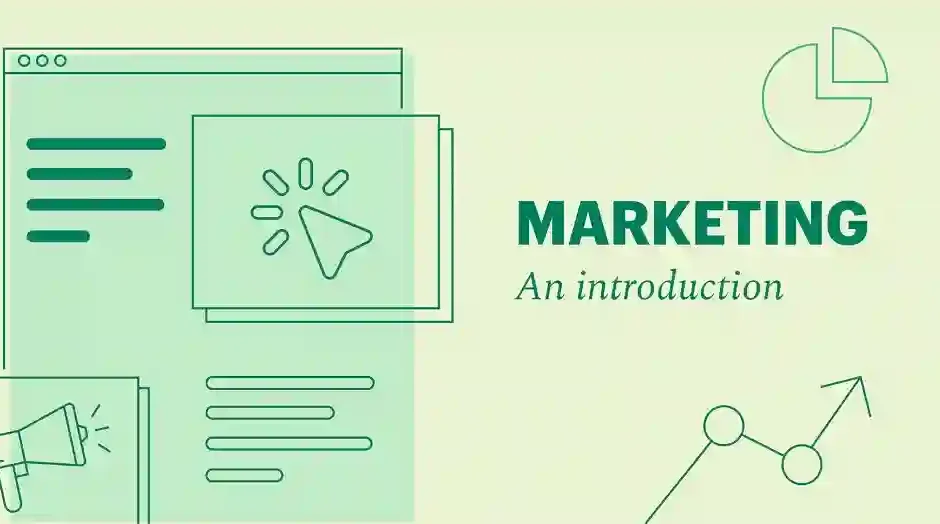In today’s digital landscape, e-commerce has become a booming industry, offering convenience and accessibility to shoppers worldwide. However, with the increasing competition, standing out and driving sales in the e-commerce space requires effective online marketing strategies. This article will explore essential tactics and approaches that can help e-commerce businesses boost their sales and achieve sustainable growth.
Imagine this scenario: You’ve launched an e-commerce store with a wide range of products that cater to various niches. Your website is up and running, and your products are top-notch. Yet, you’re struggling to gain traction and generate sales. This is where online marketing for e-commerce steps in. It’s like having a roadmap that guides you through the digital marketplace, helping you reach potential customers, showcase your products, and convert visitors into loyal buyers.
So, what exactly is online marketing for e-commerce, and why is it crucial for success? Let’s delve into the world of e-commerce marketing strategies and discover how they can help drive sales.
1. The Essence of E-commerce Marketing: Online marketing for e-commerce encompasses a wide array of strategies and tactics aimed at promoting and selling products or services through digital channels. It leverages various online platforms, techniques, and tools to attract potential customers, engage them, and ultimately convert them into buyers.
2. Understanding the E-commerce Customer Journey: To effectively market products online, it’s essential to understand the e-commerce customer journey. It typically involves stages like awareness, consideration, purchase, and post-purchase evaluation. Each stage requires specific marketing efforts tailored to meet customers’ needs and expectations.
3. A Multichannel Approach: Successful e-commerce marketing often involves a multichannel approach. This means utilizing various online channels such as your website, social media, email marketing, search engine optimization (SEO), pay-per-click (PPC) advertising, content marketing, and more to reach potential customers where they are most active.
4. Building a Strong Online Presence: Your e-commerce website serves as the digital storefront for your business. A well-designed, user-friendly, and responsive website is essential for building a strong online presence. It should showcase products effectively, provide a seamless shopping experience, and instill trust in visitors.
5. Search Engine Optimization (SEO): SEO is the practice of optimizing your website to rank higher in search engine results pages (SERPs). By targeting relevant keywords, creating high-quality content, and ensuring technical SEO best practices, you can increase organic traffic and visibility.
6. Pay-Per-Click (PPC) Advertising: PPC advertising, often through platforms like Google Ads and social media ads, allows you to bid on keywords and display ads to potential customers. It’s an effective way to drive targeted traffic and increase visibility for specific products or promotions.
7. Email Marketing: Email marketing remains a powerful tool for e-commerce businesses. You can nurture leads, engage customers, and promote products through personalized email campaigns, newsletters, and automated sequences.
8. Content Marketing: Creating valuable content, such as blog posts, product guides, and videos, can help educate and engage your audience. Content marketing positions your brand as an authority in your niche and attracts organic traffic.
9. Social Media Marketing: Social media platforms offer a direct line to your audience. By leveraging social media marketing, you can engage with customers, showcase products, run targeted ad campaigns, and build a loyal following.
10. Conversion Rate Optimization (CRO): CRO focuses on improving the conversion rate of your website, turning visitors into customers. Strategies include optimizing product pages, streamlining the checkout process, and using persuasive calls to action.
11. Customer Reviews and Testimonials: Positive customer reviews and testimonials build trust and credibility. Encourage satisfied customers to leave feedback and showcase these reviews prominently on your website.
12. Remarketing and Retargeting: Remarketing and retargeting campaigns target users who have previously visited your website but did not make a purchase. These campaigns serve as gentle reminders to revisit your site and complete the purchase.
Now, let’s explore these strategies in more detail and discuss how they can help e-commerce businesses drive sales:
1. Search Engine Optimization (SEO): SEO is the cornerstone of organic traffic generation. By optimizing your website for relevant keywords, improving site speed, and enhancing user experience, you can increase your website’s visibility in search engine results. Higher rankings lead to more organic traffic, which can result in increased sales.
2. Pay-Per-Click (PPC) Advertising: PPC campaigns allow you to target specific keywords and demographics, ensuring that your ads are displayed to users actively searching for your products. Well-structured PPC campaigns can deliver a high return on investment (ROI) by driving qualified traffic to your website.
3. Email Marketing: Email remains a potent tool for nurturing leads and converting them into customers. By segmenting your email list, personalizing messages, and sending targeted promotions and product recommendations, you can increase conversion rates and drive sales.
4. Social Media Marketing: Social media platforms offer a direct line of communication with your audience. By creating engaging content, running targeted ad campaigns, and using social commerce features, you can drive traffic to your e-commerce store and increase sales.
5. Content Marketing: High-quality, informative content not only attracts organic traffic but also positions your brand as an authority in your niche. Content that addresses customer pain points and provides solutions can drive organic traffic and encourage sales.
6. Conversion Rate Optimization (CRO): Improving the conversion rate of your website is a direct path to increased sales. Conduct A/B testing, optimize product pages, and streamline the checkout process to reduce friction and encourage more purchases.
7. Remarketing and Retargeting: Remarketing campaigns target users who have already shown interest in your products. By reminding them of their previous interaction with your website, you can re-engage potential customers and increase conversion rates.
8. Customer Reviews and Testimonials: Positive reviews and testimonials build trust and credibility. Encourage customers to leave feedback and prominently display these endorsements on your website to reassure potential buyers.
9. Multichannel Selling: Expanding your presence to multiple online marketplaces, such as Amazon, eBay, or Etsy, can broaden your reach and attract a wider audience. Each platform has its unique audience and can contribute to increased sales.
10. Analyzing Data and Metrics: Regularly analyze data and key performance indicators (KPIs) to identify what’s working and what needs improvement. Make data-driven decisions to optimize your online marketing strategies continually.
11. Loyalty Programs and Customer Retention: Retaining existing customers is often more cost-effective than acquiring new ones. Implement loyalty programs, offer exclusive discounts, and provide excellent customer service to encourage repeat purchases.
However, it’s important to acknowledge the challenges and considerations of online marketing for e-commerce:
1. Competition: The e-commerce space is highly competitive. Standing out requires unique value propositions, exceptional customer service, and continuous innovation.
2. Budget and Resource Allocation: Effective online marketing often requires financial investments in advertising, tools, and expertise. Small businesses may need to allocate resources wisely.
3. Data Privacy and Security: Handling customer data responsibly and ensuring data privacy is essential for e-commerce businesses to maintain trust and comply with regulations.
4. Customer Trust: Building trust with online shoppers is crucial. Clear policies, secure transactions, and excellent customer service are essential for fostering trust.
5. Continuous Adaptation: The digital landscape and consumer behavior evolve rapidly. E-commerce businesses must adapt to changing trends and technologies to remain competitive. In conclusion, online marketing for e-commerce is a dynamic and essential component of driving sales in the digital age. It’s like having a versatile toolbox filled with strategies and tactics that can help you reach your target audience, showcase your products, and convert visitors into loyal customers. By leveraging strategies such as SEO, PPC advertising, email marketing, social media marketing, and content creation, e-commerce businesses can unlock their full sales potential and thrive in the online marketplace. So, are you ready to take your e-commerce sales to new heights with effective online marketing strategies?


